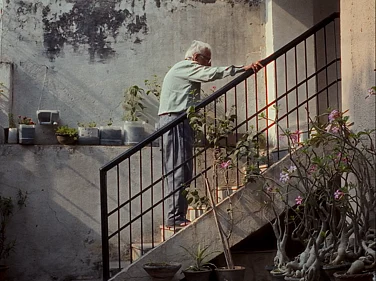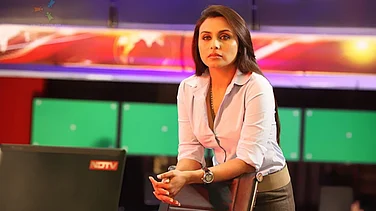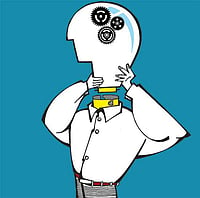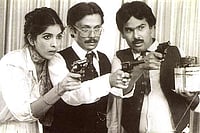My purpose in writing this column is to raise a voice of dissent in the atmosphere of smug complacency that surrounds the Bombay film industry these days. The fare on offer in cinema halls around the country includes a lot of films that, though slickly produced, are superficial, unimaginative and even downright stupid. They cannot really be called cinema—they are more like 'lifestyle' ad films or, worse, promos for Bollywood stars. What makes me even sadder is that the people behind these films are highly talented. They are collaborating in an exercise that is designed only to titillate and totally dumb-down the audience.
Let us take the example of music. For the cinema purist, music may be non-essential, but it is one of the fundamental ingredients of Indian cinema. Isn't the degradation of a great tradition audible and obvious to all? Thank god for Rahman. Then, take the content of most films—the idea that Bollywood is doing anything radically different is a notion spread by people who have no idea of the history of Indian cinema. They haven't seen Guide or Pyaasa or Teesri Kasam or Naya Daur or Sharda or, or, or... not to mention Pather Panchali or any of the Malayalam films from which concepts are routinely filched in many of our films.
Of course, in the period when these films were made, a significant number of moronic films were also being produced. But some people did try to do things differently, and they succeeded. Many people think Guru Dutt was a desperate artist living off idealism and despair. He wasn't. He was a highly successful studio owner with an enviable record of successful films. In fact, Kagaz Ke Phool was his only unsuccessful film.
The example of Guru Dutt illustrates the point that the purpose of cinema, beyond monetary profit, is to help make sense of the times we live in. Each of the films I have mentioned above helps us understand the society of the time, and the aspirations of people in those times.
But these days, the variety entertainment shows that pass off as films are so disconnected from the reality of India that it's no wonder our cinema is treated with such little respect by the rest of the world. The self-congratulatory pats on the back that Bollywood gives itself these days, about how substantially its box-office revenues are increasing, especially abroad, are often the result of an expat population stuck in a time-warp and the lopsided dollar/pound to rupee exchange rates. And Bollywood's movie moguls conveniently omit to mention the dramatic jump in the average revenue of Tamil films in the past couple of years. The reality is that today most Tamil films earn even more money than Hindi films, even though the Hindi-speaking population far outnumbers Tamil speakers.
The continuing tragedy of Hindi cinema is that it is in the grip of the hegemony of a few stars, who patronise a select few filmmakers, often resulting in the tripe that is offered to the public. I was told by two of these megastars that Hazaaron Khwahishein was one of the worst scripts they had ever read. What these stars did with their next films is a part of history that I don't wish to dwell on.
But there is light on the edge of the horizon. The fifty-plus years of Indian democracy have given rise to a new generation of Indians—confident, assertive and desirous of telling their own stories. From these ranks have risen a new crop of filmmakers who are knocking at the doors of the established feudal monopolies in Hindi cinema. Rajkumar Hirani, Anurag Kashyap, Vishal Bharadwaj, Ashutosh Gowarikar, Madhur Bhandarkar, Nagesh Kukunoor, Rakyesh Omprakash Mehra and, at the risk of offending most of my friends, Sanjay Leela Bhansali, are all outsiders, and they are telling stories from their life experiences while pushing the frontiers of the medium with a rigour, talent and discipline that is refreshing.
It is the responsibility of the entire film industry (and, dare I say, the government) to ensure that these artists, and many others including documentary filmmakers like Anand Patwardhan, are allowed to flourish and express themselves. We need them to document the times we live in so that we may comprehend them better. The alternative is a truly depressing scenario with an overdose of tripe and melodrama made by illiterates that will demolish not just great potential talent among aspiring filmmakers, but also our audiences' taste for quality cinema. Once Sahir wrote "Woh afsana jise anjaam tak le jana na ho mumkin, use ek khoobsurat mod dekar chodna accha". The modern lyricist writes "Crazy kiya re..."
Beware. Seriously beware.
Thirsting For Pyaasa
What we make today is not cinema but superficial, downright dumb drivel

Thirsting For Pyaasa
Thirsting For Pyaasa
Hazaaron Khwahishein Aisi
Published At:
- Previous Story
 Chaar Phool Hain Aur Duniya Hai Review | Unbound Snippets From A Writer’s World
Chaar Phool Hain Aur Duniya Hai Review | Unbound Snippets From A Writer’s World - Next Story
MOST POPULAR
WATCH
MORE FROM THE AUTHOR
PHOTOS
×




















